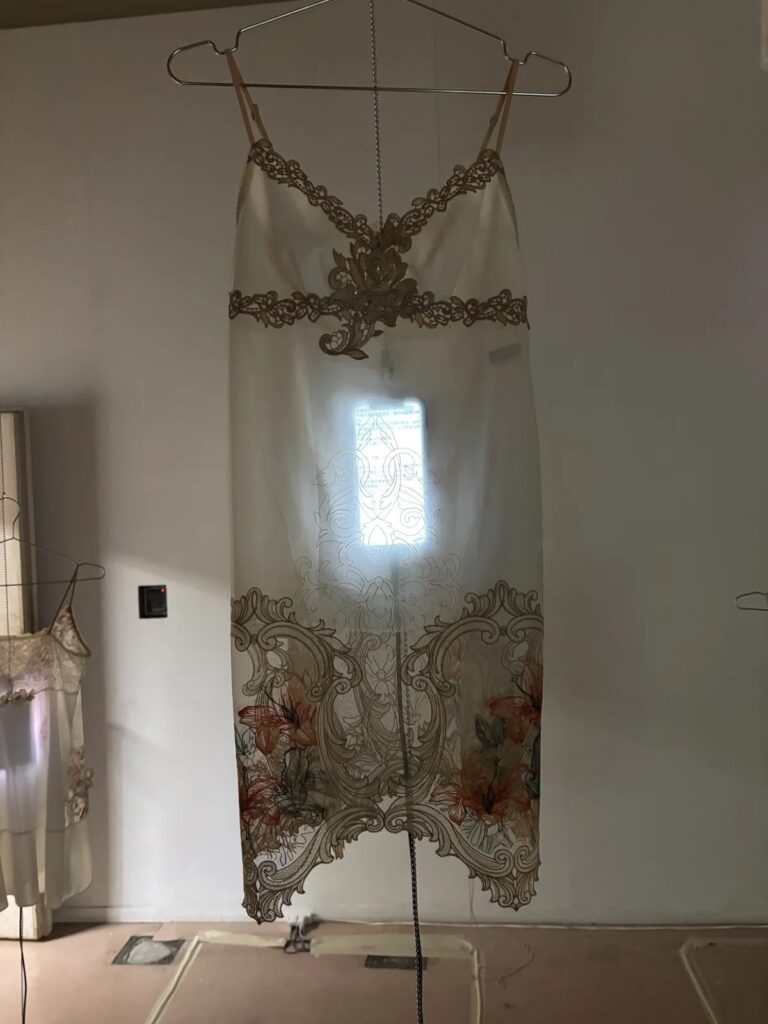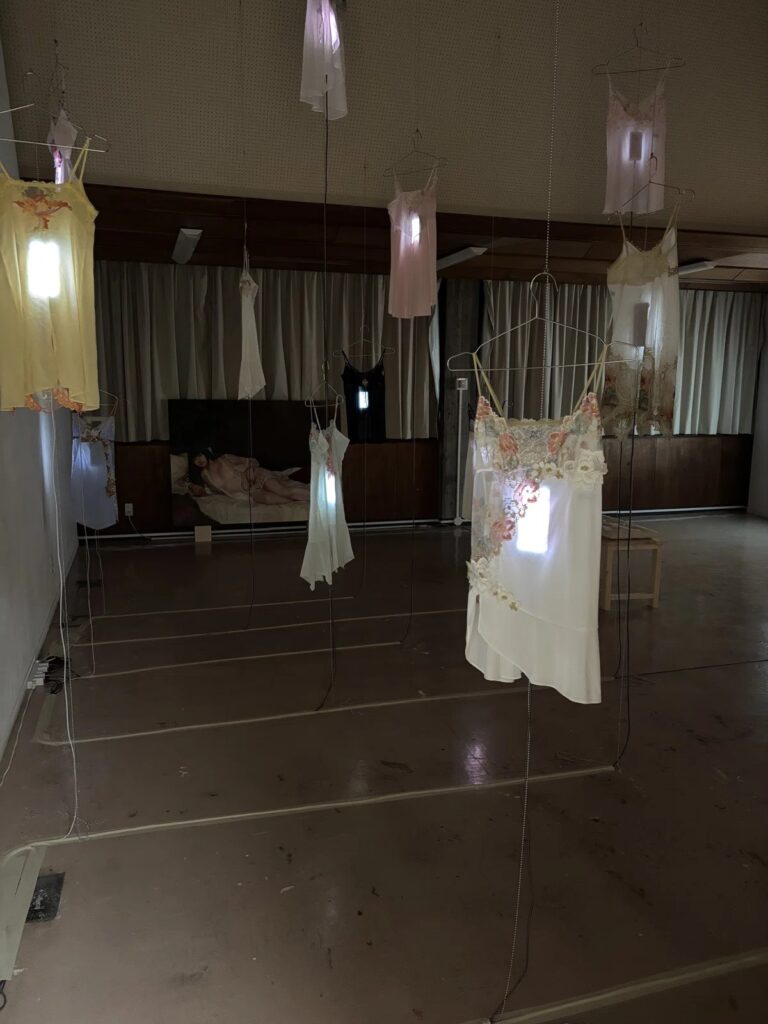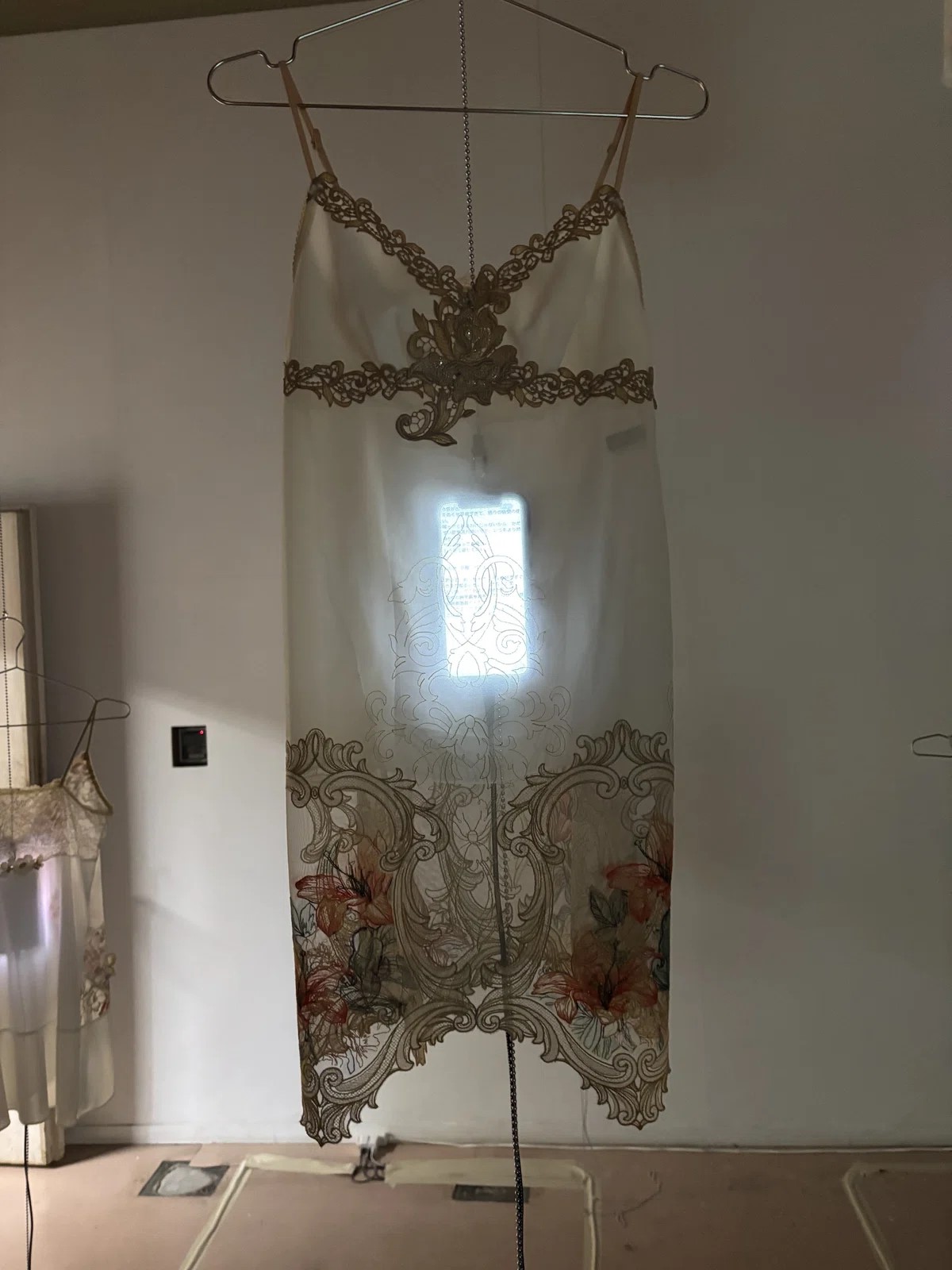A Review by Saito Tsutomu Originally published in Japanese on note.com
Exhibition: Aichi University of the Arts Graduate Exhibition
Year: 2025
Medium: Installation (camisoles, smartphones), oil on canvas
Dimensions: Variable dimensions
Institution: Aichi University of the Arts
Opening Context
The graduation exhibition at Aichi University of the Arts has undergone changes this year—bus service from the nearest station has been discontinued. New buildings for Japanese painting and sculpture departments gleam with fresh construction. It’s difficult to consider this development in isolation, though perhaps this is a cynical perspective. The graduate oil painting exhibition at Aichi University of the Arts takes place primarily in the secluded former music department building, where most graduate students’ works are displayed. Asano Miyabi’s “Thank You, December 31st” was presented as an installation piece.
The Work
Multiple camisoles hang suspended from the ceiling. Drawn by the gentle light emanating from within them, viewers approach only to realize that the illumination comes from smartphone screens. Within each camisole, text messages are visible but not intended to be fully read. These camisoles were provided by sex workers, and the text messages displayed on the smartphones are thank-you emails to clients and accompanying client memos.

Art Historical Resonance
The work presents extremely private elements through a double “veil.” There is the physical veil of the undergarment fabric and the digital veil of the smartphone screen’s limited visibility—the screen switches as one attempts to read it. Through this dual concealment, the work skillfully controls the viewer’s gaze and psychological distance.

In the depths of the space, an unlit painting depicts a semi-nude woman lying down. This painting, titled “Venus of Ikebukuro,” directly references Titian’s iconic Venus of Urbino. Asano Miyabi employed a real sex worker as her model, meticulously reproducing the original painting’s composition and size. This installation evokes the historical fact that nude painting models were often prostitutes, creating a suggestive attempt to connect the sex industry with representation in art history. By invoking such a seminal art historical work, Venus of Ikebukuro confronts established notions of beauty, muse, and female representation within the art canon. It critically examines who is deemed worthy of artistic portrayal and immortalization, challenging preconceived notions about desire, vulnerability, and the commodification of the female body.

Social Commentary
The title “Thank You, December 31st” symbolically represents sex industry workers and their clients who work during this special year-end period. This work visualizes a reality that society “knows but makes invisible” or “chooses not to see.” Each camisole represents individuality, seemingly making visible the subjects who participate in commercial sexual transactions. The distinctive decorations and colors of each camisole hint at the individual stories embedded within them. Simultaneously, their arrangement standing together in one space can be read as a microcosm of a reality that certainly exists in our society but which we have avoided confronting directly.
Artistic Achievement
Asano’s work clearly presents a delicate theme while avoiding direct expression, prompting deep reflection from viewers. The method of connecting art historical context with contemporary social issues functions effectively. This installation poses important questions about the social taboo of the sex industry. These questions extend beyond mere sex work to connect with broader social inquiries encompassing economic inequality, gender issues, and urban loneliness in contemporary society. The work demonstrates how art can illuminate hidden aspects of society, transforming private experiences into public discourse while maintaining the dignity and complexity of the subjects involved. Through its careful balance of revelation and concealment, “Thank You, December 31st” creates a space for contemplation about the invisible labor and emotional economies that exist within our urban landscapes.
Exhibition: Aichi University of the Arts Graduate Exhibition
Medium: Installation (camisoles, smartphones), oil on canvas
Year: 2025
